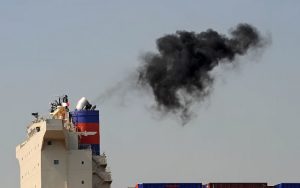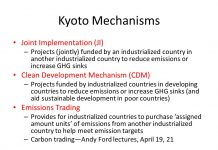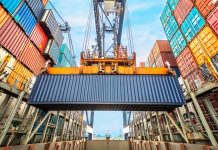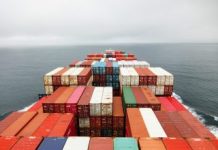 Oxides of Sulphur (SOx) are long known to be severely damaging to people’s respiratory health and they are responsible for harmful acid rain causing damage to entire ecology. There are a number of industrial sources, for huge SOx emission. Particularly in ship industry, the discharge stems from combustion of heavy fuel oil obtained through distillation of Sulphur bearing crude oil. It is thus essentially important to cap emission of such harmful gases derived from oxidation of Sulphur for better air quality and safer coastal environment. Again, ship is such a usefully unique transportation mode that gigantic amount of goods can be moved to huge distance through water path in most energy efficient manner at one go with least pollution generation. With the sustained growth in global trade, there is no other option except resorting to this convenient carrying means and accepting the potential growth of shipping industry. Hence so long there is an increased need of bunker fuel, SOx emission from shipping cannot be avoided, although there is scope for its reduction by increasing ship’s energy efficiency so as to reduce fuel intake and secondly, by controlling Sulphur content in fuel itself.
Oxides of Sulphur (SOx) are long known to be severely damaging to people’s respiratory health and they are responsible for harmful acid rain causing damage to entire ecology. There are a number of industrial sources, for huge SOx emission. Particularly in ship industry, the discharge stems from combustion of heavy fuel oil obtained through distillation of Sulphur bearing crude oil. It is thus essentially important to cap emission of such harmful gases derived from oxidation of Sulphur for better air quality and safer coastal environment. Again, ship is such a usefully unique transportation mode that gigantic amount of goods can be moved to huge distance through water path in most energy efficient manner at one go with least pollution generation. With the sustained growth in global trade, there is no other option except resorting to this convenient carrying means and accepting the potential growth of shipping industry. Hence so long there is an increased need of bunker fuel, SOx emission from shipping cannot be avoided, although there is scope for its reduction by increasing ship’s energy efficiency so as to reduce fuel intake and secondly, by controlling Sulphur content in fuel itself.
To do this, as per Annex VI of the MARPOL (International Convention for the Prevention of Pollution from Ships), IMO (International Maritime Organization) started imposing regulation to reduce emission from SOx effectively from the year 2005. It has been decided to reduce straight away the quantum of Sulphur 3.50% m/m to 0.50% m/m (mass by mass) through stringent quality check, in the fuel oil for ships other than the designated emission control areas from January 1, 2020. There is no scope in deferring this deadline further for time constraint. The stricter limit of 0.10% m/m for emission control areas (ECAs) will continue to hold. As per MEPC (Marine Environment Protection Committee) survey report of 2016, Finland, unless such proactive steps are taken for checking the SOx emission level, there is a potential of losing more than 570,000 additional lives during the first five years of the current millennium’s third decade. It is believed that imposing the above stipulations, such unwanted casualties can be well avoided.
In order to comply with the above regulation, three important steps are to be taken by shipping industries. First of all, the ships’ engine should handle Sulphur-lean fuel oil blends. Secondly, there is an alternative scope for limiting air pollutants by utilizing exhaust gas cleaning machineries, e.g. scrubbers. Finally, increased utilization of engines capable of using LNG or biofuels can be thought about. For the first and foremost step, currently there is less availability of low Sulphur fuel (0.50% m/m) suitable for shipping operation at ECAs and more availability of bunker fuel outside ECAs. Thus, price difference between these two varieties is of great concern to meet the 2020 limit. But judicious blending of these two fuels can meet the impending regulation. IMO’s study on “Assessment of fuel oil availability” does not indicate any serious concern about scarceness of required fuel from refineries in near future. It is the onus of the governments and national authorities of member states, encompassing all flag states and port states which participate to MARPOL Annex VI to monitor fulfilment of the IMO stipulated limits. IMO acts as only a buffer between the member states and shipping, bunker supply and refining industry for addressing all intermediary issues towards meeting the new criterion. For instance, compilation of standard guidance and protocols for reporting unavailability and quality issues of suitable oil. The MARPOL regulations are in force for all ships irrespective of their size. Moreover, larger ships with more than 400 gross tonnages engaged in voyages to ports or offshore terminals handled by others must have an International Air Pollution Prevention Certificate from the ship’s flag state.

































These are actually great ideas in concerning blogging.
You have touched some pleasant things here. Any way keep up wrinting.